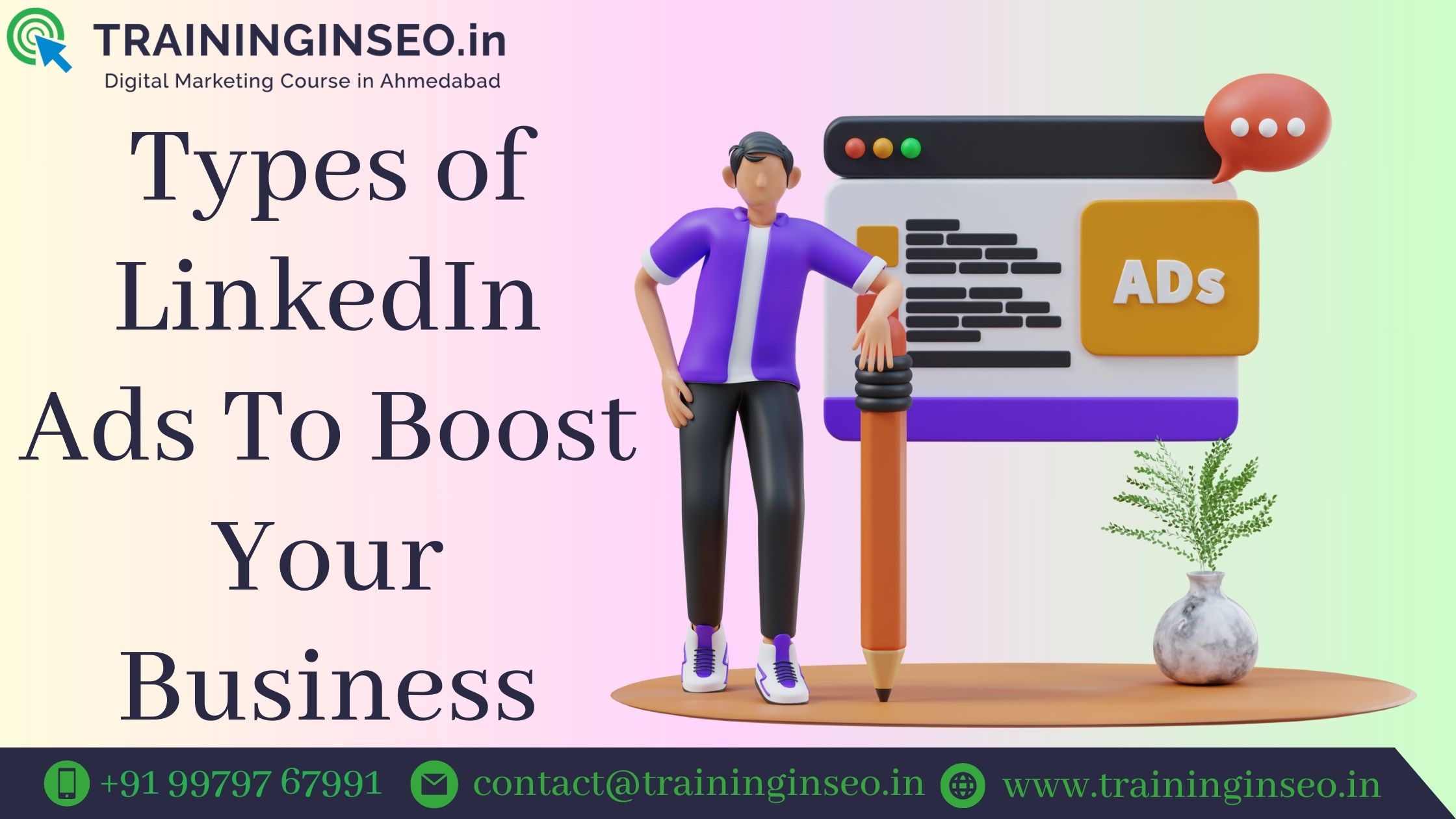Types of LinkedIn Ads To Boost Your Business

Businesses can advertise their goods and services on the LinkedIn network through a kind of internet advertising called LinkedIn Ads. Based on a variety of factors, like job title, industry, firm size, geography, and more, these advertisements can be tailored to particular audiences. For a very long time, LinkedIn Ads have been improving and evolving, giving businesses a special chance to connect with highly engaged professionals and decision-makers. Consequently, an increasing number of companies have begun incorporating LinkedIn Ads into their entire marketing plan, which has added to the platform’s ongoing buzz and expansion. LinkedIn ads are very well taught at Digital Marketing Institute in Ahmedabad but for our online audience, we will explain different types of LinkedIn ads in this article in brief.
Types of LinkedIn Ads
Sponsored content
These advertisements resemble typical posts and show up in the LinkedIn feed. They may contain links to your website as well as text, pictures, and videos. Sponsored Content may be tailored to particular industries or job titles among particular demographics.
Sponsored Inmail
Users receive these advertisements straight in their LinkedIn inbox. They may contain call-to-actions, links, and customised messages. Groups or job titles can be the focus of Sponsored InMail.
Text Ads
These are plain, text-only advertisements that show up on the LinkedIn feed’s right side. By industry, job title, and location, they can be targeted.
Dynamic Ads
These advertisements are customised for the individual and may contain their name and profile photo. They can be used to promote content, send out invitations to events, and list jobs.
Display Ads
These visually stunning advertisements may contain pictures, films, and animations. They could be shown in the user’s feed or on the LinkedIn site. Targeting display ads by industry, region, and job title is possible.
How do sponsored content work?
A sort of advertising known as “sponsored content” is when a company pays to produce or market content that is displayed on a third-party platform. Although it is intended to advertise a company, goods, or service, the material is made to appear and feel like the platform’s standard content. This can be learned in Digital Marketing training in Ahmedabad and here’s how they work:
By finding the right platform
Companies must decide which platform is best for their sponsored content. This may be a podcast, a publisher like a newspaper platform, or a social networking site like Facebook or Instagram.
By selecting the right target audience
Brands must possess a comprehensive comprehension of their intended audience’s demographics, interests, and behavior. They can use this knowledge to produce content that appeals to their target audience.
Creating good content
In partnership with the platform or content provider, the brand will produce the sponsored content. The material may be posted on social media, in the form of an article or video. Remember, it is always advisable to focus on content as the content must always be good.
Promoting the content efficiently
The audience of the platform or content provider will be informed about the sponsored material. Either paid advertising or organic reach could do this. No matter how good the content is, if it is not promoted efficiently, it never works.
Legal considerations
Advertisers must make sure that their sponsored material conforms to all applicable rules and laws regarding advertising. Making sure the content is accurate and truthful is part of this.
Cost considerations
The platform, the kind of content, and the audience size will all affect the cost of sponsored content. To guarantee a profitable return on investment, brands must account for the expenses associated with producing and advertising the content.








Reader Interactions